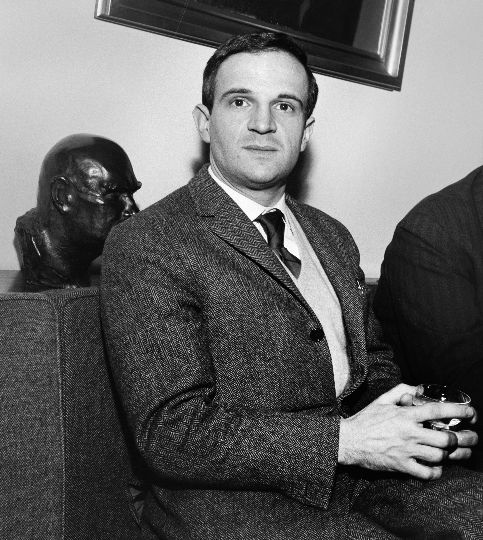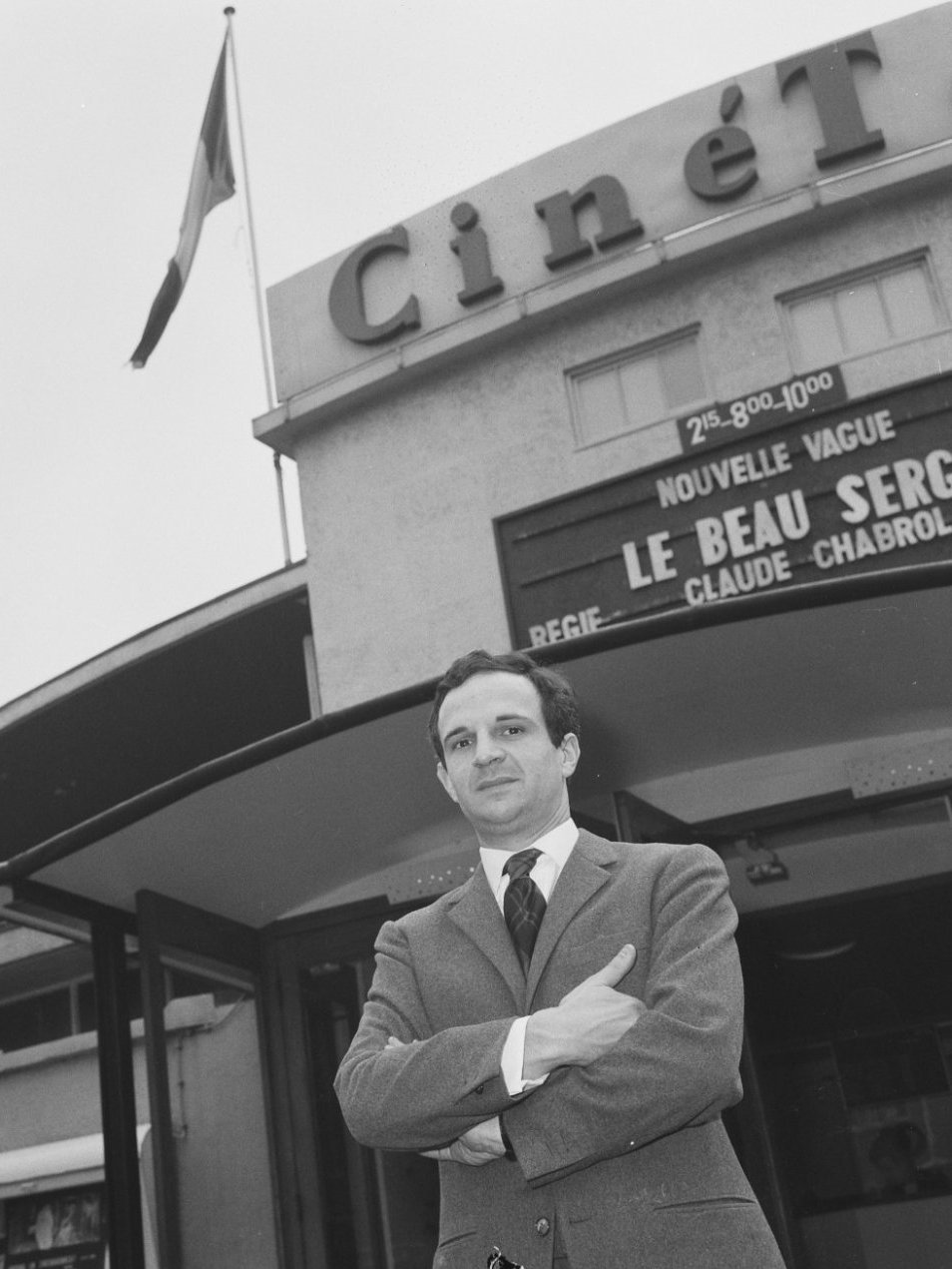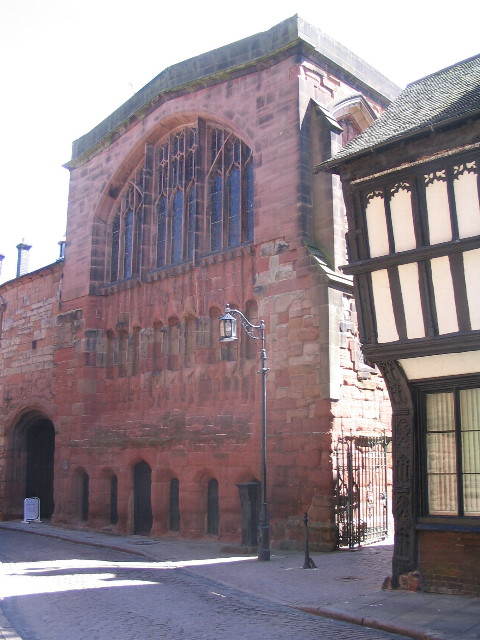|
Robin Wood (critic)
Robert Paul Wood (23 February 1931 – 18 December 2009) – known as Robin Wood – was an English film critic and educator who lived in Canada for much of his life. He wrote books on the works of Alfred Hitchcock, Howard Hawks, Satyajit Ray, Ingmar Bergman, Michelangelo Antonioni, and Arthur Penn. Wood was a longtime member - and co-founder, along with other colleagues at Toronto's York University - of the editorial collective which publishes '' CineACTION!'', a film theory magazine. Wood was also York professor emeritus of film. Biography Early life Wood was born in Richmond, Surrey, England. According to ''Contemporary Authors'' he attended Jesus College, Cambridge, where he was influenced by F. R. Leavis and A. P. Rossiter, and graduated in 1953 with a diploma in education. From 1954 to 1958, Wood taught in schools in both England and Sweden. After a year in Lille, France, teaching English, Wood returned to schools in England, and again in Sweden, where he met Aline ... [...More Info...] [...Related Items...] OR: [Wikipedia] [Google] [Baidu] |
Richmond, London
Richmond is a town in south-west London,The London Government Act 1963 (c.33) (as amended) categorises the London Borough of Richmond upon Thames as an Outer London borough. Although it is on both sides of the River Thames, the Boundary Commission for England defines it as being in South London or the South Thames sub-region, pairing it with Kingston upon Thames for the purposes of devising constituencies. However, for the purposes of the London Plan, Richmond now lies within the West London region. west-southwest of Charing Cross. It is on a meander of the River Thames, with many parks and open spaces, including Richmond Park, and many protected conservation areas, which include much of Richmond Hill. A specific Act of Parliament protects the scenic view of the River Thames from Richmond. Richmond was founded following Henry VII's building of Richmond Palace in the 16th century, from which the town derives its name. (The palace itself was named after Henry's earldom of ... [...More Info...] [...Related Items...] OR: [Wikipedia] [Google] [Baidu] |
Psycho (1960 Film)
''Psycho'' is a 1960 American psychological horror thriller film produced and directed by Alfred Hitchcock. The screenplay, written by Joseph Stefano, was based on the 1959 novel of the same name by Robert Bloch. The film stars Anthony Perkins, Janet Leigh, Vera Miles, John Gavin and Martin Balsam. The plot centers on an encounter between on-the-run embezzler Marion Crane (Leigh) and shy motel proprietor Norman Bates (Perkins) and its aftermath, in which a private investigator (Balsam), Marion's lover Sam Loomis (Gavin), and her sister Lila (Miles) investigate her disappearance. ''Psycho'' was seen as a departure from Hitchcock's previous film '' North by Northwest'', as it was filmed on a lower budget in black-and-white by the crew of his television series '' Alfred Hitchcock Presents''. The film was initially considered controversial and received mixed reviews, but audience interest and outstanding box-office returns prompted a major critical re-evaluation. ''Psycho ... [...More Info...] [...Related Items...] OR: [Wikipedia] [Google] [Baidu] |
François Truffaut
François Roland Truffaut ( , ; ; 6 February 1932 – 21 October 1984) was a French film director, screenwriter, producer, actor, and film critic. He is widely regarded as one of the founders of the French New Wave. After a career of more than 25 years, he remains an icon of the French film industry, having worked on over 25 films. Truffaut's film '' The 400 Blows'' (1959) is a defining film of the French New Wave movement, and has four sequels, ''Antoine et Colette'' (1962), '' Stolen Kisses'' (1968), '' Bed and Board'' (1970), and '' Love on the Run'' (1979). Truffaut's 1973 film '' Day for Night'' earned him critical acclaim and several awards, including the BAFTA Award for Best Film and the Academy Award for Best Foreign Language Film. His other notable films include '' Shoot the Piano Player'' (1960), '' Jules and Jim'' (1962), '' The Soft Skin'' (1964), '' The Wild Child'' (1970), '' Two English Girls'' (1971), '' The Last Metro'' (1980), and ''The Woman Next Door'' ( ... [...More Info...] [...Related Items...] OR: [Wikipedia] [Google] [Baidu] |
Auteur Theory
An auteur (; , 'author') is an artist with a distinctive approach, usually a film director whose filmmaking control is so unbounded but personal that the director is likened to the "author" of the film, which thus manifests the director's unique style or thematic focus. As an unnamed value, auteurism originated in French film criticism of the late 1940s, and derives from the critical approach of André Bazin and Alexandre Astruc, whereas American critic Andrew Sarris in 1962 called it auteur theory. Yet the concept first appeared in French in 1955 when director François Truffaut termed it ''policy of the authors'', and interpreted the films of some directors, like Alfred Hitchcock, as a body revealing recurring themes and preoccupations. American actor Jerry Lewis directed his own 1960 film '' The Bellboy'' via sweeping control, and was praised for "personal genius." By 1970, the New Hollywood era emerged with studios granting directors broad leeway. Pauline Kael argued, howeve ... [...More Info...] [...Related Items...] OR: [Wikipedia] [Google] [Baidu] |
Semiology
Semiotics (also called semiotic studies) is the systematic study of sign processes (semiosis) and meaning making. Semiosis is any activity, conduct, or process that involves signs, where a sign is defined as anything that communicates something, usually called a meaning, to the sign's interpreter. The meaning can be intentional such as a word uttered with a specific meaning, or unintentional, such as a symptom being a sign of a particular medical condition. Signs can also communicate feelings (which are usually not considered meanings) and may communicate internally (through thought itself) or through any of the senses: visual, auditory, tactile, olfactory, or gustatory (taste). Contemporary semiotics is a branch of science that studies meaning-making and various types of knowledge. The semiotic tradition explores the study of signs and symbols as a significant part of communications. Unlike linguistics, semiotics also studies non-linguistic sign systems. Semiotics includes th ... [...More Info...] [...Related Items...] OR: [Wikipedia] [Google] [Baidu] |
Jean-Luc Godard
Jean-Luc Godard ( , ; ; 3 December 193013 September 2022) was a French-Swiss film director, screenwriter, and film critic. He rose to prominence as a pioneer of the French New Wave film movement of the 1960s, alongside such filmmakers as François Truffaut, Agnès Varda, Éric Rohmer, and Jacques Demy. He was arguably the most influential French filmmaker of the post-war era. According to AllMovie, his work "revolutionized the motion picture form" through its experimentation with narrative, continuity, sound, and camerawork. His most acclaimed films include ''Breathless'' (1960), '' Vivre sa vie'' (1962), '' Contempt'' (1963), ''Band of Outsiders'' (1964), '' Alphaville'' (1965), '' Pierrot le Fou'' (1965), '' Masculin Féminin'' (1966), '' Weekend'' (1967), and '' Goodbye to Language'' (2014). During his early career as a film critic for the influential magazine '' Cahiers du Cinéma'', Godard criticised mainstream French cinema's "Tradition of Quality", which de-empha ... [...More Info...] [...Related Items...] OR: [Wikipedia] [Google] [Baidu] |
Claude Chabrol
Claude Henri Jean Chabrol (; 24 June 1930 – 12 September 2010) was a French film director and a member of the French New Wave (''nouvelle vague'') group of filmmakers who first came to prominence at the end of the 1950s. Like his colleagues and contemporaries Jean-Luc Godard, François Truffaut, Éric Rohmer and Jacques Rivette, Chabrol was a critic for the influential film magazine '' Cahiers du cinéma'' before beginning his career as a film maker. Chabrol's career began with '' Le Beau Serge'' (1958), inspired by Hitchcock's ''Shadow of a Doubt'' (1943). Thrillers became something of a trademark for Chabrol, with an approach characterized by a distanced objectivity. This is especially apparent in '' Les Biches'' (1968), ''La Femme infidèle'' (1969), and '' Le Boucher'' (1970) – all featuring Stéphane Audran, who was his wife at the time. Sometimes characterized as a "mainstream" New Wave director, Chabrol remained prolific and popular throughout his half-century ca ... [...More Info...] [...Related Items...] OR: [Wikipedia] [Google] [Baidu] |
Nouvelle Vague
French New Wave (french: La Nouvelle Vague) is a French art film movement that emerged in the late 1950s. The movement was characterized by its rejection of traditional filmmaking conventions in favor of experimentation and a spirit of iconoclasm. New Wave filmmakers explored new approaches to editing, visual style, and narrative, as well as engagement with the social and political upheavals of the era, often making use of irony or exploring existential themes. The New Wave is often considered one of the most influential movements in the history of cinema. The term was first used by a group of French film critics and cinephiles associated with the magazine ''Cahiers du cinéma'' in the late 1950s and 1960s. These critics rejected the ''Tradition de qualité'' ("Tradition of Quality") of mainstream French cinema, which emphasized craft over innovation and old works over experimentation. This was apparent in a manifesto-like 1954 essay by François Truffaut, ''Une certaine tendan ... [...More Info...] [...Related Items...] OR: [Wikipedia] [Google] [Baidu] |
Sight & Sound
''Sight and Sound'' (also spelled ''Sight & Sound'') is a British monthly film magazine published by the British Film Institute (BFI). It conducts the well-known, once-a-decade ''Sight and Sound'' Poll of the Greatest Films of All Time, ongoing since 1952. History and content ''Sight and Sound'' was first published in Spring 1932 as "A quarterly review of modern aids to learning published under the auspices of the British Institute of Adult Education". In 1934 management of the magazine was handed to the nascent British Film Institute (BFI), which still publishes the magazine today. ''Sight and Sound'' was published quarterly for most of its history until the early 1990s, apart from a brief run as a monthly publication in the early 1950s, but in 1991 it merged with another BFI publication, the '' Monthly Film Bulletin'', and started to appear monthly. In 1949, Gavin Lambert, co-founder of film journal '' Sequence'', was hired as the editor, and also brought with him ''Sequen ... [...More Info...] [...Related Items...] OR: [Wikipedia] [Google] [Baidu] |
British Film Institute
The British Film Institute (BFI) is a film and television charitable organisation which promotes and preserves film-making and television in the United Kingdom. The BFI uses funds provided by the National Lottery to encourage film production, distribution, and education. It is sponsored by the Department for Digital, Culture, Media and Sport, and partially funded under the British Film Institute Act 1949. Purpose It was established in 1933 to encourage the development of the arts of film, television and the moving image throughout the United Kingdom, to promote their use as a record of contemporary life and manners, to promote education about film, television and the moving image generally, and their impact on society, to promote access to and appreciation of the widest possible range of British and world cinema and to establish, care for and develop collections reflecting the moving image history and heritage of the United Kingdom. BFI activities Archive The BFI main ... [...More Info...] [...Related Items...] OR: [Wikipedia] [Google] [Baidu] |
Coventry
Coventry ( or ) is a city in the West Midlands, England. It is on the River Sherbourne. Coventry has been a large settlement for centuries, although it was not founded and given its city status until the Middle Ages. The city is governed by Coventry City Council. Formerly part of Warwickshire until 1451, Coventry had a population of 345,328 at the 2021 census, making it the tenth largest city in England and the 12th largest in the United Kingdom. It is the second largest city in the West Midlands region, after Birmingham, from which it is separated by an area of green belt known as the Meriden Gap, and the third largest in the wider Midlands after Birmingham and Leicester. The city is part of a larger conurbation known as the Coventry and Bedworth Urban Area, which in 2021 had a population of 389,603. Coventry is east-south-east of Birmingham, south-west of Leicester, north of Warwick and north-west of London. Coventry is also the most central city in Englan ... [...More Info...] [...Related Items...] OR: [Wikipedia] [Google] [Baidu] |







